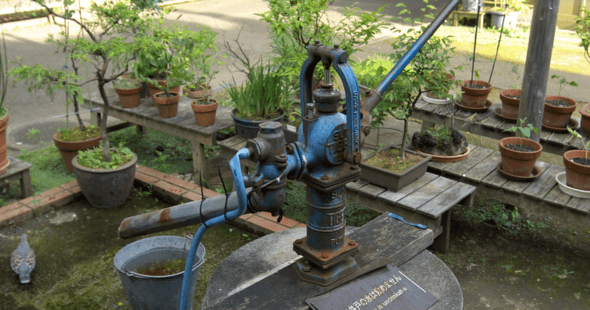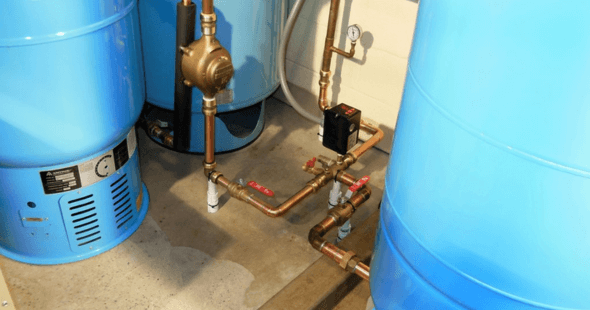Low water pressure in a home with a well system can be frustrating. Whether it’s the trickle of water from your showerhead or the slow filling of your washing machine, insufficient water pressure can disrupt daily activities. Fortunately, several effective ways exist to increase water pressure on a well pump. In this blog post, we’ll explore the causes of low water pressure and provide actionable solutions backed by data and expert advice.
Understanding Normal Well Water Pressure

Before diving into solutions, it’s essential to understand what constitutes normal water pressure for a well system. The ideal range for well water pressure is between 40 and 60 pounds per square inch (psi)1. Most well systems are designed with a default setting of 30/50 psi or 40/60 psi, where the first number represents the “cut-on” pressure (when the pump turns on). The second number represents the “cut-off” pressure (when the pump turns off).
In comparison, municipal water systems typically deliver higher pressures of around 60 psi. If your home’s water pressure falls below 40 psi, it may be time to investigate and address potential issues.
Common Causes of Low Water Pressure in Well Systems
Several factors can contribute to low water pressure in homes with well pumps:
- Clogged Pipes: Mineral deposits, sediment buildup, or hard water scale can restrict flow.
- Incorrect Pump Sizing: A pump that is too small for your household’s demand will struggle to maintain adequate pressure.
- Faulty Pressure Tank: A damaged or leaking bladder inside the tank can lead to inconsistent or low pressure.
- Well Yield Issues: Shallow wells or wells with low recovery rates may not supply enough water.
- Leaks in Plumbing: Cracked pipes or loose connections can divert water and reduce system efficiency.
Step-by-Step Solutions to Increase Water Pressure on a Well Pump
1. Adjust Your Pressure Switch Settings
One of the simplest ways to increase well water pressure is by adjusting your pump’s pressure switch settings.
- Locate the switch near your well’s pressure tank.
- Turn off power to the pump at the circuit breaker for safety.
- Use an air gauge to check the current tank pressure; it should be about 2 psi below the cut-on setting.
- Adjust the large nut on the switch clockwise to increase cut-on and cut-off pressures (e.g., from 30/50 psi to 40/60 psi).
- Restore power and test your faucets.
Important Note: Do not exceed 60 psi as higher pressures may damage pipes and fixtures.
2. Clean Clogged Pipes and Fixtures
Mineral buildup from hard water is a common culprit behind reduced flow rates.
- Remove faucet aerators and showerheads; soak them overnight in white vinegar to dissolve calcium deposits.
- For severe blockages within pipes, consult a plumber who can use specialized tools like pipe snakes or hydrojetting equipment.
According to experts, homes with hard water should consider installing a water softener, which prevents scale buildup that restricts flow.
3. Install a Constant Pressure System
A constant pressure system ensures steady water delivery even when multiple taps run simultaneously.
- These systems use variable speed pumps that adjust their output based on demand.
- Unlike traditional systems that operate in an “on/off” cycle, constant-pressure systems maintain consistent flow by modulating pump speed.
While installation costs range from $2,000 to $5,000, depending on system size, they are highly effective for households with high water usage or multi-story homes.
4. Upgrade Your Well Pump
Upgrading may solve persistent low-pressure issues if your current pump isn’t powerful enough for your household needs.
- Submersible pumps are ideal for deep wells as they provide higher flow rates than jet pumps.
- Consult a professional plumber or well contractor who can calculate optimal pump size based on depth-to-water level and gallons-per-minute (GPM) requirements.
5. Add a Booster Pump
A booster pump works alongside your existing system to amplify incoming water pressure before it reaches fixtures.
- Booster pumps cost between $200–$800 depending on capacity.
- They’re particularly useful if you live far from your good source or have long plumbing runs that reduce natural flow rates due to friction loss.
6. Inspect Your Pressure Tank
The bladder inside your tank is crucial in maintaining consistent pressures throughout your home.
Steps:
- Turn off the power at the breaker box.
- Drain all remaining water from the tank using its spigot.
- Check the air fill valve using an air gauge. If it reads below recommended levels (typically ~38 psi for tanks set at 40/60), add air using an air compressor.
If you notice leaks or suspect internal damage within the tank, replacement may be necessary—new tanks typically cost $300–$700.
7. Check for Leaks in the Plumbing
Leaks waste both energy and resources while reducing available flow at fixtures:
- Inspect visible pipes under sinks/basements for drips or pooling.
- Monitor outdoor irrigation lines regularly during dry seasons when soil shifts could cause cracks.
To detect hidden leaks:
- Shut off all faucets/appliances temporarily;
- Observe whether meter readings continue moving over ~30 minutes without usage activity. This indicates possible underground leakage requiring immediate attention.
Preventative Measures Against Low Water Pressure
To avoid future problems:
- Schedule annual inspections by licensed professionals, ensuring components remain functional long-term;
- Replace narrow-diameter piping (<½ inch wide)—upgrading larger diameters improves throughput significantly!
- Install filtration units combating sediment accumulation upstream before entering mainline distribution points.
Final Thoughts
Increasing well-pump-based household pressures involves diagnosing root causes and systematically addressing each issue accordingly! From simple DIY adjustments like tweaking switches and cleaning aerators through advanced installations such as boosters and constant-flow regulators, solutions exist catering to diverse budgets and preferences alike!
By following the steps outlined above, implementing preventative measures, and proactively safeguarding against recurring disruptions, you’ll enjoy uninterrupted showers, faster laundry cycles, and improved overall quality of life today and tomorrow!

